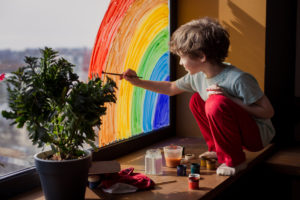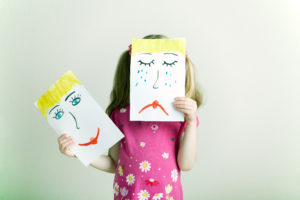Supporting Children to Develop Self-Regulation Skills
Changes to the EYFS (PSED)
In the new EYFS, self-regulation is now covered in the prime area of Personal, social and emotional development. If you want to keep up to date, find the EYFS here.
The new Early Learning Goal, within Personal, Social and Emotional Development describes self-regulation as follows:
ELG: Self-Regulation – Children at the expected level of development will: – Show an understanding of their own feelings and those of others, and begin to regulate their behaviour accordingly; – Set and work towards simple goals, being able to wait for what they want and control their immediate impulses when appropriate; – Give focused attention to what the teacher says, responding appropriately even when engaged in activity, and show an ability to follow instructions involving several ideas or actions.
So, why is self-regulation so important?
Self-regulation means that as a child (and later as an adult) we can:
- Recognise our emotions
- Respond to them and calm ourselves
- To resist highly emotional overwhelming responses to triggers
- To be able to control emotions or redirect them to positive actions
- To be able to adjust to changes in situations
- To be able to manage unpredictability
- It develops our resilience
- It increases confidence
- It increases self-esteem
- It helps us focus on goals and targets
- It helps us manage failure constructively
What is dysregulation?
When we are dysregulated, our ability to be able to manage and respond to the internal storm within us, means that we might:
- Big emotional reactions to situations
- A build up of distress leading to outburst or collapse
- Disruptive behaviours when unpredictable situations or transitions occur
- Emotional meltdowns
- Anxiety
- Arguments or aggressive behaviours
- Extreme perfectionism
- Self-harming behaviours
- Have feelings of helplessness
Consequences
Long term, children who become adults who are not able to regulate their emotions can struggle with:
- Low confidence
- Low self-esteem
- Low resilience
- Difficulty managing stress
- Difficulty managing frustration
- Impulsivity
- Anger management difficulties
- Anxiety
- Self-harming behaviours
- Risky behaviours or substance misuse
Factors which affect self-regulation
There are some factors which affect our ability to regulate our own emotions, these are areas, that as adults, we need to ensure that we are supporting. If children are dysregulated, checking these areas off can give us a quick review of contributing factors:
- Nutrition
- Hydration
- Sleep quality and quantity
- Physical Activity and exercise
- Screentime
- Environment (noise, lighting, temperature, smells, clutter)
For instance, a child whose nutritional choices are not balanced, who is dehydrated or relies on sugar or carbonated drinks may struggle more with self-control. A child whose sleep quality or quantity is not meeting their developmental needs may find it harder to respond to their emotions. A child who is not having enough physical activity and/or spends too much time on screens may find it more challenging to self-control and regulate. For many, the environment can impact our ability to manage our emotions.
Impact of Adverse Childhood Effects / Developmental Needs
On a subnote, it must be noted, that a child who has experienced situations such as the following, may find it more difficult to cognitively appraise situations and regulate their emotions:
- Trauma
- Violence
- Domestic violence
- Stress
- Lack of strong /secure attachment
- Experiencing PTSD
- ADHD
- Autism
- Anxiety disorders
The role of the adult in emotional regulation?
Emotional regulation requires adults to guide and coach children to be able to take a moment to
- Recognise the feeling
- Think it through
- Make a plan
- Execute the plan (with or without help)
As adults, albeit parents or professionals, we can prohibit children from developing self-regulation if we:
- Develop a habit of doing things for children, rather than supporting or coaching them to find their own solutions
- If we do not model self-regulation ourselves (for instance, demonstrating positive ways to manage stress or feelings)
- Giving in to meltdowns or overly soothing children, becoming external regulators and removing the opportunity to self-regulate (please note children with ADHD, autism or anxiety may need more support)
- Solving children’s problems for them, rather than encouraging them to find their own solutions
- Stepping in too quickly when children are struggling, rather than using the opportunity to coach or support
- Parents escalate with the child, through behaviours or raising voices, which prevent regulation occurring
- Children’s dysregulation is met with criticism or shame, preventing them from being able to express their emotions or feeling that doing so, is a shameful behaviour
- Waiting until children are dysregulated to teach regulation skills, rather than teaching them beforehand to develop the appropriate cognitive pathways
When we feel dysregulated, our brain is operating from its brainstem and limbic system, this is where our emotions are expelled and the fight-flight response to stress occurs. When we operate from this space, regulating is not the priority. The brain, in this situation, feels unsafe and feels that it is under threat. Cortisol and adrenaline are rushing around the body, increasing our heart rate, breathing and sending blood to our limbs, telling us to escape. This can be an incredibly uncomfortable feeling for children, making them feel unsettled, scared or panic. In this state, we are not receptive and may not hear what is being said to us.
In order to be able to regulate, we need to activate the pre-frontal cortex, which is activated when we feel safe. The prefrontal cortex, responsible for logic, responses, problem solving, empathy, planning and decision making, develops from birth until around 25 years old, so with age our ability to regulate increases. The prefrontal cortex is our control centre, and so, to regulate we need to move our of the fight-flight system and into the control. So, our first step is safety.
Therefore, we need to teach self-regulation all the time, rather than wait until we are dysregulated, so that in the moments of threat, we have a suitcase of strategies to help ourselves.

Developing self-regulation
Self-regulation can be supported by:
- Managing our own stress – Managing our own stress allows us to avoid escalating with children and be their lighthouse in the storm. Taking time to meet your own needs is vital to being able to recognise children’s emotional needs and to support children to manage their own.
- Avoiding symmetrical escalation – Whilst it can be easy to get caught in the thunderstorm, learning to be present and create a safe space when children are struggling is key to supporting regulation. Connection is core to creating a sense of safety.
- Expanding emotional vocabulary – Supporting children to develop their emotional vocabulary, through role play, conversations, stories and games supports children to be able to respond to their needs. See the links below for resources.
- Increase self-awareness – Supporting children to take time to process their thoughts, through giving time to think about, talk or describe their emotions increases their self-awareness. This can include rating their feelings on number or face scales.
- Share emotional literacy stories – Sharing stories where characters learn to recognise and respond to their own emotions can support children to be able to develop their own emotional literacy. See list of links below.
- Teach regulation strategies – Teaching children regulation activities builds their toolbox. In addition, adding self-regulation activities to the day in times when you recognise children can struggle, such as after school supports them to feel able to respond more positively. Check out our article here.
- Create regular opportunities to practice somatic self-soothing strategies (to calm the Central nervous System) – supporting children to utilise somatic self-soothing, means that they can help their central nervous system to enter rest mode. These can be activities we use in the day, in challenging situations or at bedtime. You can find a whole list in our stress and anxiety mental health care plans – find them here.
- Offer opportunities to practice self-regulation skills – Utilise time in the day to use self-regulation activities to identify which helps each child. Different children need different strategies. identifying which they respond to allows you to create a tool box for them. You can find a whole list in our stress and anxiety mental health care plans – find it here
- Offer opportunities to take quiet time and sit with thoughts – Supporting children to feel comfortable in taking part in quiet activities, where they can sit with their feelings and feel comfortable is vital to developing self-regulation.
- Practice mindfulness or relaxation – Building in weekly opportunities to practice mindfulness or relaxation can support children to reset their central nervous systems and process any stress or anxiety which has built up. You can find a whole selection of audios to support guided relaxation here or Brian’s relaxation audios here

You might want to look at:
#1 – Our article about creating sensory boxes – find it HERE
#2 – Our range of emotional literacy audio books (The Adventures of Brian) – find them HERE
#3 – Our emotional literacy feelings cards – find them HERE
#4 – Our story books to support emotional literacy – find them HERE
#5 – Our anxiety and stress mental health care plans (including somatic and regulatory activities – HERE
#6 – Our anxiety workbook containing activities for regulation – find it HERE
#7 – Our courses about mental health – find them HERE
© Dandelion Training and Development – All Rights Reserved
Looking for more?
Don’t forget that you can register and subscribe to our newsletter to receive weekly articles and resources.

Further help
For more articles about mental health visit – HERE
To learn more about child and adolescent mental health visit – HERE
For resources to support child and adolescent mental health visit – HERE


